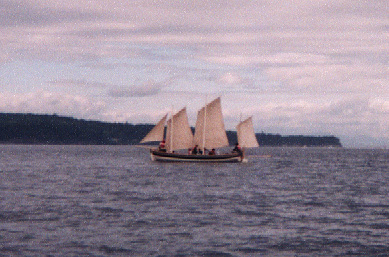
This is a full scale replica of the longboat carried aboard Capt. Robert Gray's Columbia in his early explorations of the Pacific Northwest.
The long boats
Explorers and seamen relied heavily on their ships' boats to carry out the work of trading, mapping, and exploration. These long boats were carried on board, and launched when the ships were close to land. They could get in to shore, and much closer than the main ship, which needed to stay out in deep water if it was not to go aground. Often it was the ship's longboat that first explored new and dangerous waters to find a safe passage for the mother ship.

This is a full scale replica of the longboat carried aboard Capt. Robert Gray's Columbia in his early explorations of the Pacific Northwest.
The original boats were very strong to withstand the hazards and abuse of being worked from a small ship at sea.
The size of the original boats was governed by the deck arrangement and rigging of the mother ship. The boats were stowed on deck between the main and fore masts and had to be of a size that could be swung out through the maze of shrouds, stays, and backstays that made up the ship's standing rigging.
--------------------------------------------------------------
Dimensions and Specifications:
Length: 26 feet (that's about 9 metres long)
Beam: 7 feet (that's about 2 metres wide)
Draft: 22 inches (that means they could float in about 60cm of water - quite shallow!)
Masts: 3
Number of sails: 4
Sailing rig: main and fore: dipping lugsails and jib
mizzen: standing lugsails
Total sail area: 310 square feet
Oars: 10 14-foot ash oars
Displacement: 3800 lbs.